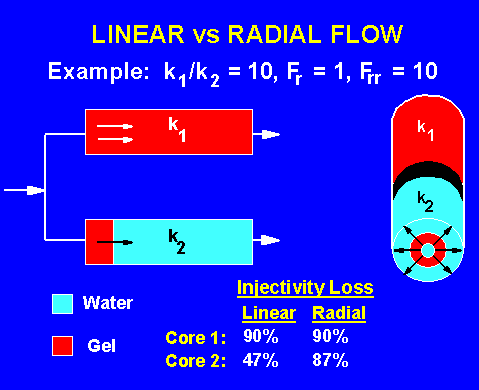Is the Matrix-Flow Problem Compounded by Crossflow?

Once fractures and fracture-like features are eliminated as possibilities, the problem is deduced to be radial in nature (i.e., radial flow exists in the matrix rock around the wellbore). Next, the possibility of crossflow between reservoir strata must be addressed. If fluids can crossflow between adjacent water and hydrocarbon strata (and flow is radial), a gel treatment should not be attempted.22 Even if gelant is only injected into a single zone, it will crossflow into and damage the oil producing zones away from the wellbore. Thus, no matter how much gelant is injected, the treatment will be ineffective in promoting conformance.22 In contrast, if fluids cannot crossflow between zones and sealing Portland cement exists that prevents vertical flow immediately behind the casing, a gel treatment can be effective if gelant injection is placed only in the offending water zones.17
Several methods are used to assess whether crossflow exists between strata, including
- pressure tests between zones,
- various logs for determining fluid saturations, permeability, porosity, and lithology,
- injection/production profiles,
- simulation, and
- seismic methods.